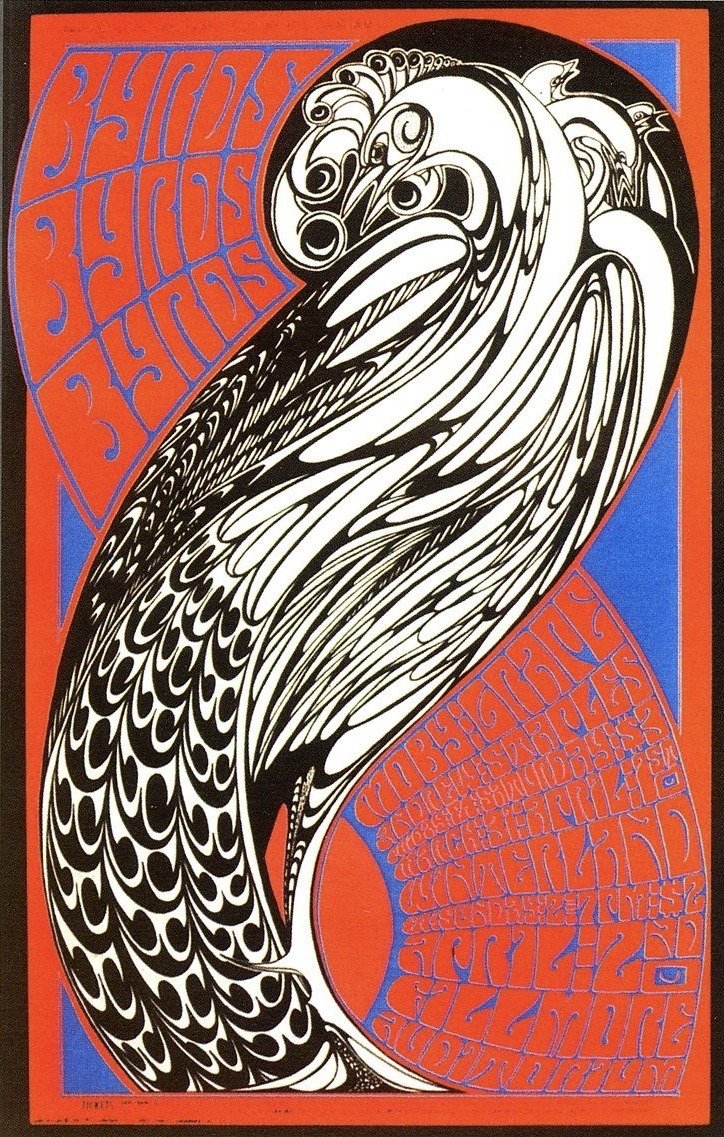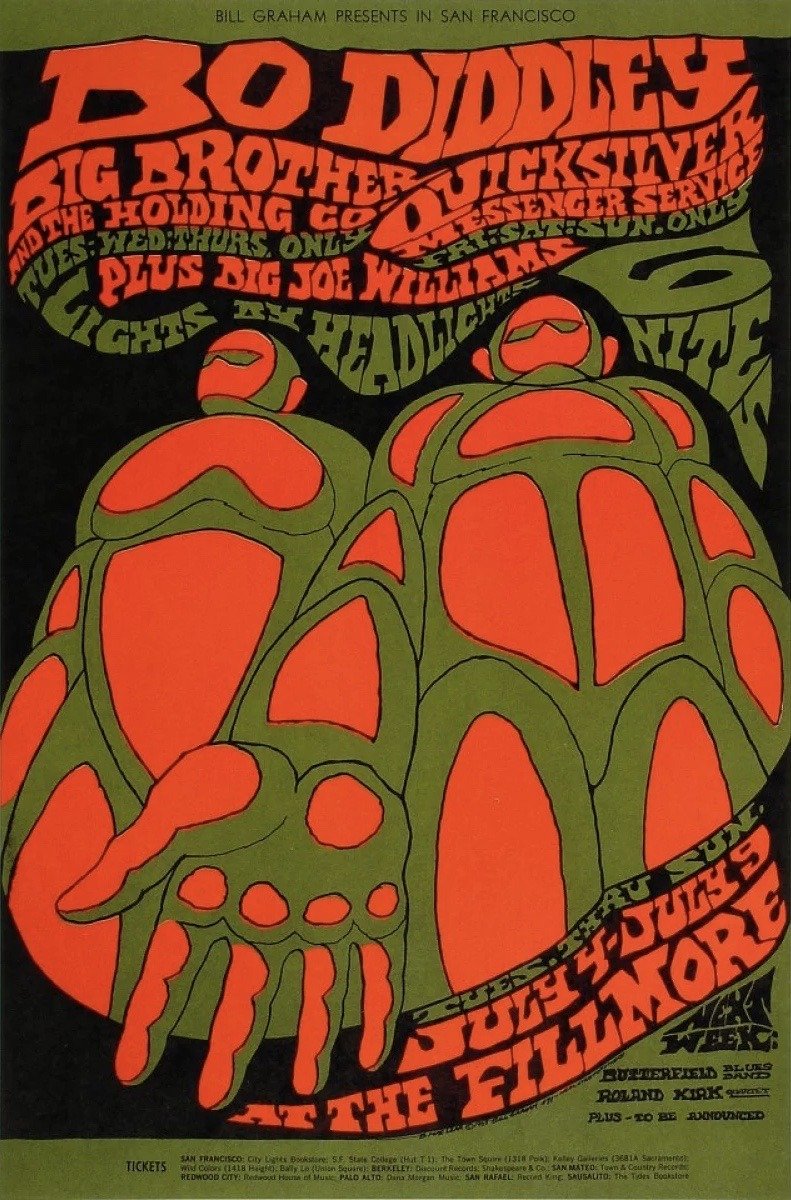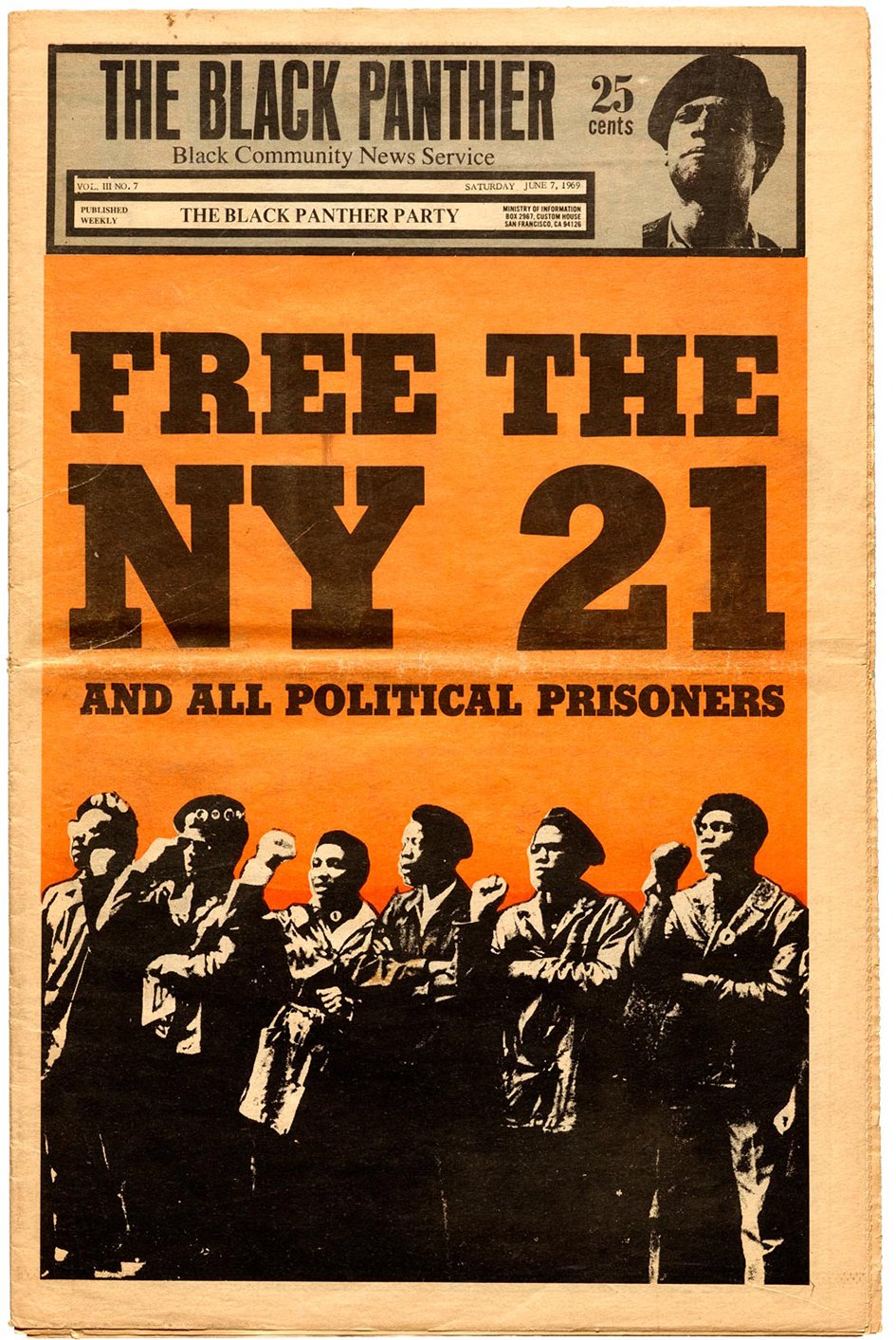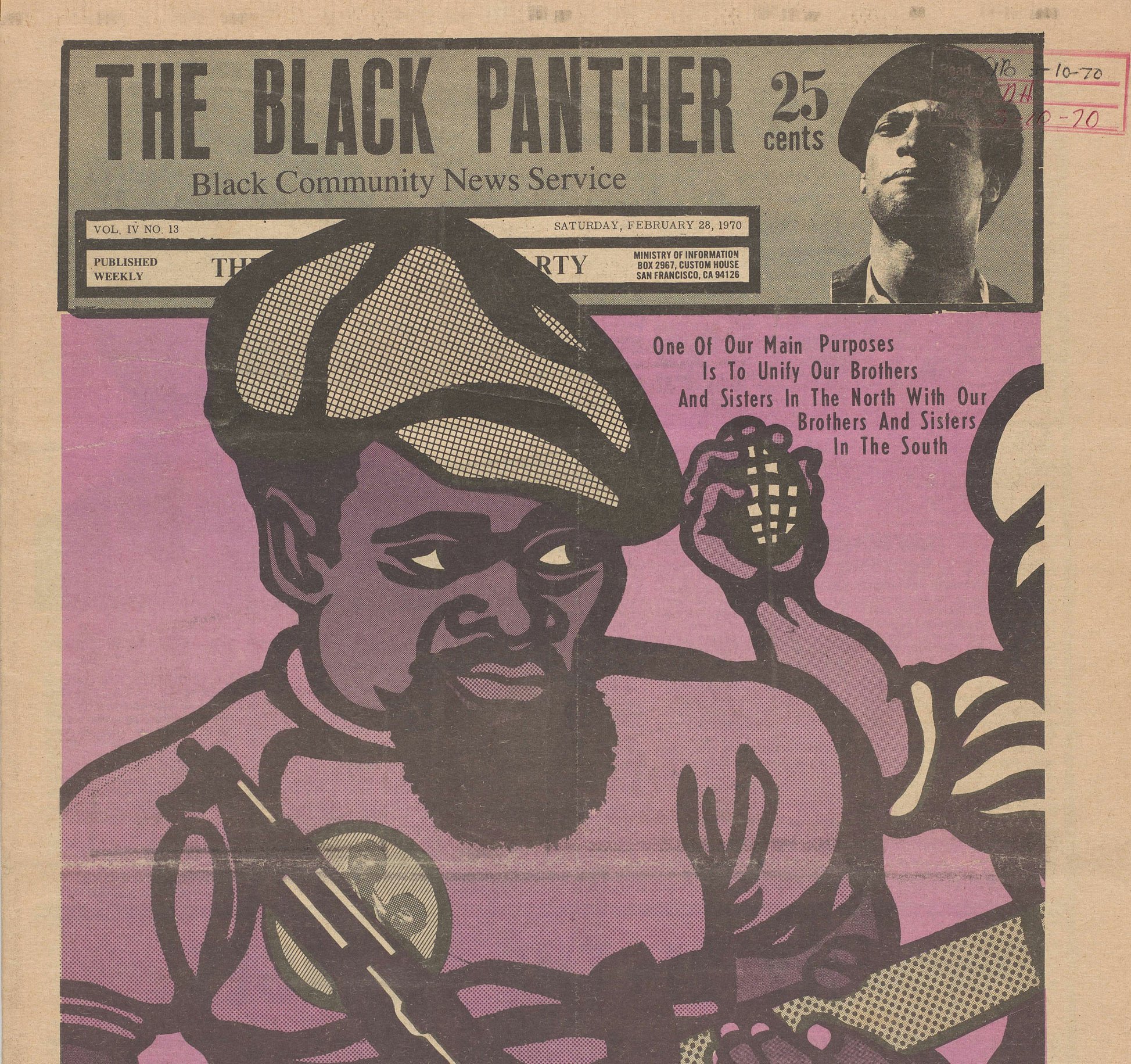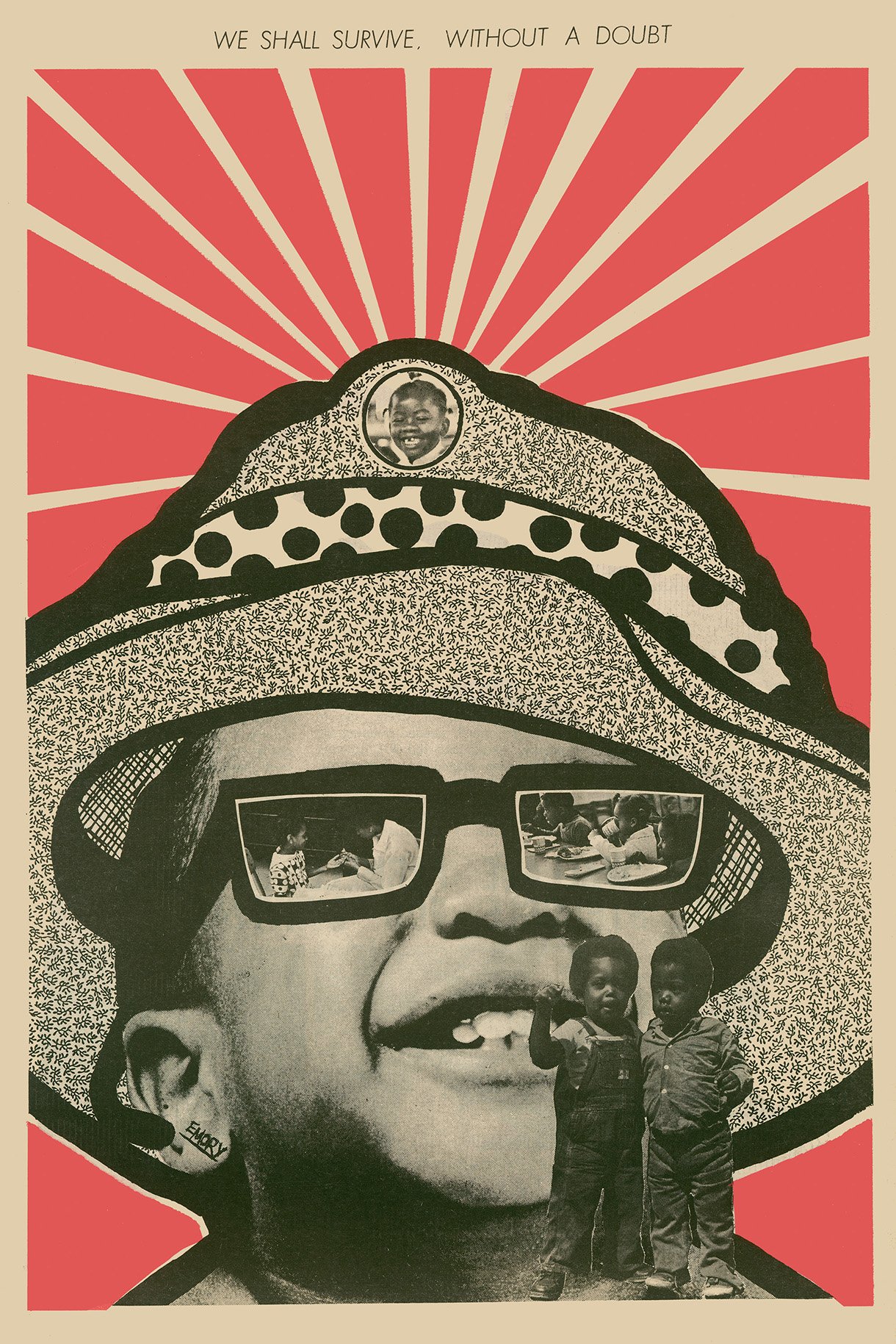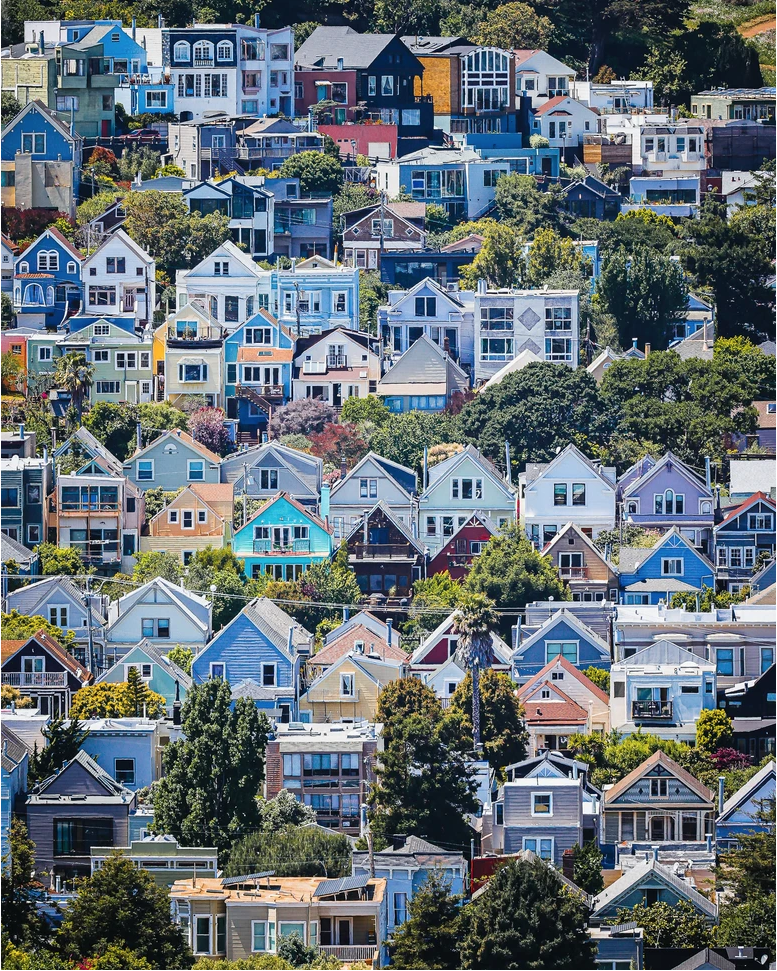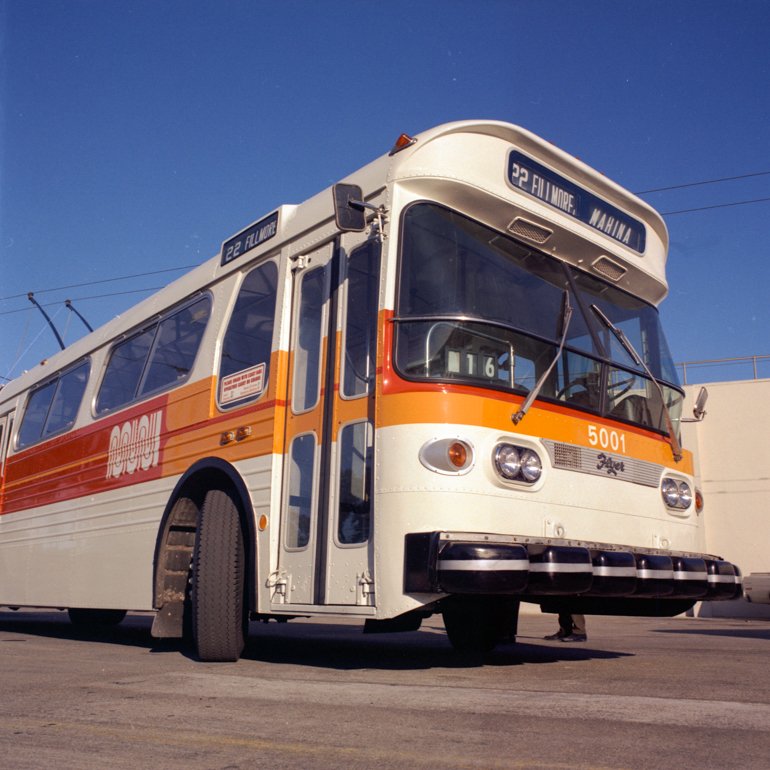The story of San Francisco design is a story of color. The mixture of colors in the city is one that overwhelmingly defines the city, reflecting the rich mosaic of cultures, identities, and historical events at its core. Although there’s not one way to define the type of art that comes out of San Francisco and California at large, the common thread is the vibrancy and inspiration that’s tucked into the architecture, the streets, the posters, and pretty much everywhere. Here is a spotlight on some noteworthy art from San Francisco designers who paved the way for San Francisco and California design.
Psychedelic Posters and the Counterculture
A classic emblem of San Francisco counterculture in the 60s, Bonnie MacLean’s psychedelic posters are characterized by swirly typography and faces. In Los Angeles, similarly, Colby Poster Printing Company created posters characterized by bright colors and a technique that allowed for rapid mass printing. While the neon colors served the practical purpose of being legible from afar, they also represented the vibrance of the counterculture. Both types of posters channeled the power of the underground, taking influence from the world around them and adding to the uniquely San Francisco design.
Social Movement Art
With the distribution of the Black Panther newspapers in Oakland in 1967, Emory Douglas played a key role in using art to convey the messaging. With Douglas’s support, the paper reached up to 400,000 readers, and also supported the political messaging of ¡Basta Ya! (a publication supporting 7 falsely accused Latinx youths). Beyond this revolutionary newspaper, San Francisco Bay Area design has been largely impacted by social movements throughout time.
Architecture & Street Signs
For many, the colorful architecture of San Francisco is vital to the image of San Francisco that they have in their heads. The history of the modern San Francisco architecture goes back to 1849 with the gold rush, when Italianates, or homes that resembled Italian villas and farmhouses were all the rage. With the influence of the world around it (capitalism, the turn of the century, the Great Depression, etc.), San Franciscan homes changed with the times, developing into the numerous prevalent styles of different SF neighborhoods. San Francisco’s homes reflect its colorful history, with around 16 styles, including Art Deco, Queen Anne, Mission Revival, and Postmodern.
San Francisco’s street signs visually communicate its history as well, also rooted in the Gold Rush. Differing in lines, angles, borders, backgrounds, reflective qualities, and enamel, the street signs symbolize the different phases of the city’s history. The street signs are so well-loved that they were even developed into typography.
Local Pride
The kind of art that touches locals is the kind of art that starts from the everyday. If you grew up in San Francisco or elsewhere in California, you might recognize some of these iconic masterpieces that are embedded in the everyday history of the world around you.
Muni Logo: Walter Landor, creator of one of the biggest branding agencies in the world, is the mastermind behind the now legendary Muni logo. With the changes in the transit system, Landor created the now famous “worm” design set on a sunset background. The Muni logo demonstrates the lasting power of a good logo, standing as a recognizable symbol of SF transit.
Hand-Painted Signs: While at first glance the hand-painted signs of the streets of San Francisco and California simply draw passersby into businesses with bright, detailed paintings, these signs present a piece of Latinx heritage, showing pride for neighborhoods, countries, and cultures.
Ghost Signs: Marking the popularity of hand-painted signs from 1906 to the mid 1950’s, fading hand-painted signs span the whole of the city as landmarks of San Francisco design. By studying each of these visual points of disappearing history marked by San Francisco designers, you get some insight into the layout of the city in the past, providing yet another visual story of the city.
Julie Murray
Murals: Murals are yet another artistic expression of the social, political, and cultural identities that make up San Francisco. Walking through the streets of the Mission District can shed light on the issues that concern San Francisco designers, such as social inclusion, environmental causes, and women’s rights. Clarion Alley in particular stands as a physical representation of the art community’s unity against gentrification since 1992.
Noteworthy Artists
Although the list of San Francisco designers and artists could go on and on, we highlight some artists whose work has pushed the art world forward. These artists remind us of the impressive work we can create with inspiration from the city.
Richard Diebenkorn: An artist who spent time in both San Francisco and Los Angeles, Richard Diebenkorn’s art is a testament to the way that the environment of the artist affects the art. Some of his art portrays the sharp hills of San Francisco, while other works mirror the pastel tones reminiscent of Los Angeles.
Fred Lyon: Without description, the works of this 20th century photographer are evidently influenced by his surroundings. Not only do his photos depict the streets and bridges of the city beautifully, but the overlay of the fog serves as a sort of fingerprint on the photos as a uniquely SF aesthetic.
April Greiman: A pioneer in the very beginnings of digital art, April Greiman is an important figure in the Californian art community. Playing an important role in defining modern digital art, Greiman was also inspired by the environment around her, namely the Los Angeles sunset.
Esther Hernandez: With deep-reaching art depicting Latina and Native women, Esther Hernandez is a Californian artist who expresses issues bigger than herself. Her haunting work is highly political, playing on and twisting somewhat familiar, everyday imagery into highly evocative and sharp art.
Richard Serra: A San Francisco native, Richard Serra’s exploration of a wide variety of materials led to his eventual success as a sculptor. He is best known for his work consisting of impressive arcs and spirals that are crucial to the story of San Francisco design.
Ruth Asawa: Having lived through the Japanese internment through World War II, Ruth Asawa (“citizen of the universe”)’s vision was to transcend for a bigger cause through art. She called for inclusion and revolution, and was known for her wire sculptures.
A Common Thread
Art and design comes in many forms, but the commonality is that it always seems to have people at the center. The work of these San Francisco designers and artists are inspired by the stories of the society around them, making the art localized in the heart of the people rooted there.
Anastasia Salazar Ltd. is an independent design studio for tailored branding and digital designs. Reach out to learn how we can help you fuel growth and maximize your brand’s impact.


